How to use cable ties and a guide to the different types of cable tie and their various uses. Understand which type of cable tie (or zip ties) that you can use and ideas for them in a variety of useful ways. Cable ties are very versatile - this project will help you to see their full potential.
Cable management is just one use for cable ties and these versatile pieces of equipment warrant a page all on their own to describe the multiple uses they can be put to. Cable ties are also very cheap which makes them a great cost effective solution to many jobs around the home or workshop.

The images above show just a few varieties of cable tie – From Left to Right: Nylon Cable tie, Cable Tie Cradles, Coloured Cable Ties, Marker Ties, Printed Cable Ties, Velcro Cable Ties
How to Use Cable Ties
The beauty of a cable tie is their ease to use. Simply insert the pointed end of the cable into the locking piece; usually the square head of the tie and there is a hole which the pointed end of the tie is designed to run through on the clasp, it will only work one way.
The teeth on the head will only catch on the ridges of the tie if they are inserted correctly and a quick pull will confirm if they have caught. You will also be able to hear the teeth clicking rapidly over the ridges as you tighten the tie.
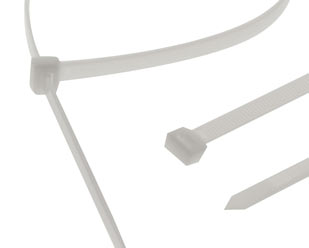
How to use a cable tie – The different parts
If it doesn’t catch you simply need to remove the pointed end, turn over the cable tie and replace the pointed end into the head from the right direction.
Pull back against the cable to tighten it and move the head down the cable tie as far as it will go. Once the cable is tight and secured you can then cut off the excess loose end. This is not absolutely necessary, but it will neaten things up.
Different Types of Cable Tie
There are a huge range of types and size of cable ties. It is worth trying to get the right size cable tie for the project that you are working on; in practice this means trying to get the smallest cable tie that will definitely do the job. This will make it easier to handle and less expensive.
If your cable ties are too small, you can get around this on a temporary basis by linking 2 or more cable ties together into a chain and then using this chain of ties as if they were one larger cable tie.
Most cable ties are made from moulded nylon, however there are some that are not, depending on the type of tie and it’s intended use. The main different types of cable ties include the following:
- Coloured Cable Ties: Coloured ties are incredibly useful for grouping together different cable groups or items to be able to single them out easily. You can quickly see which cables are destined for a particular location or use in a larger bundle. We have used these ties as office key rings to identify different sets of keys easily
-
Marker Ties: These are typically nylon ties that have a flat plat that can be written on so that it is clear what the tie is holding. Marker ties have so many uses there just is not room to mention them all here. From rose bushes to sandwiches there is nothing that cannot be identified with a marker tie.
Of course they are very handy for marking sure you know what a particular cable or bunch of cables are and where they go too! It is possible to get cable ties pre-printed although this is more expensive and generally required a larger volume to be purchased.
Printed cable ties do not require any imagination to work out the number of uses. These ties can be printed with names or numbers (or both) for easy identification. These are known as security ties
- Velcro Cable Ties: There is the Velcro cable tie. These ties are re-usable and with a 150mm (6 inch) strap can also be used for a variety of jobs. Velcro ties are very useful for computer and other data-cables as they will not crush the cables and cause damage
- Steel Cable Ties: Other cable ties include, rust proof stainless steel ties which are ideal for strapping items which need protection from chemicals or salt water
- Eyelet Cable Ties: These allow the cable tie to be fastened and then a label can be tied to an eyelet within the cable tie. It also allows you to screw the cable ties to a surface, through the eyelet, before tying the cables
- Releasable Cable Ties: Releasable cable ties a type of reusable cable tie. They tend to be a little more expensive but the benefit is that you can use them again. They have a little nylon catch fitted to the head which can be released to stop the teeth biting into the head. This allows the cable tie to be undone. We use these to secure our benches when we present our Tricks of the Trade Theatre – so please come along to a show and we can tell you more! You cannot use this again and again forever, however we do feel that they do warrant the extra expense in our case
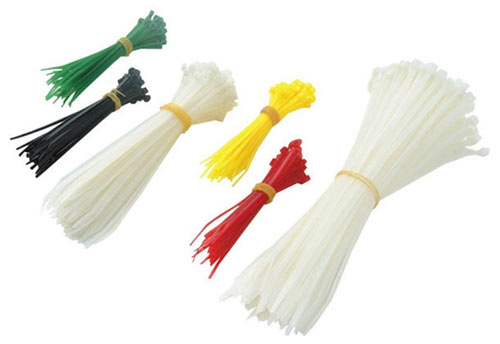
Selection of coloured cable ties
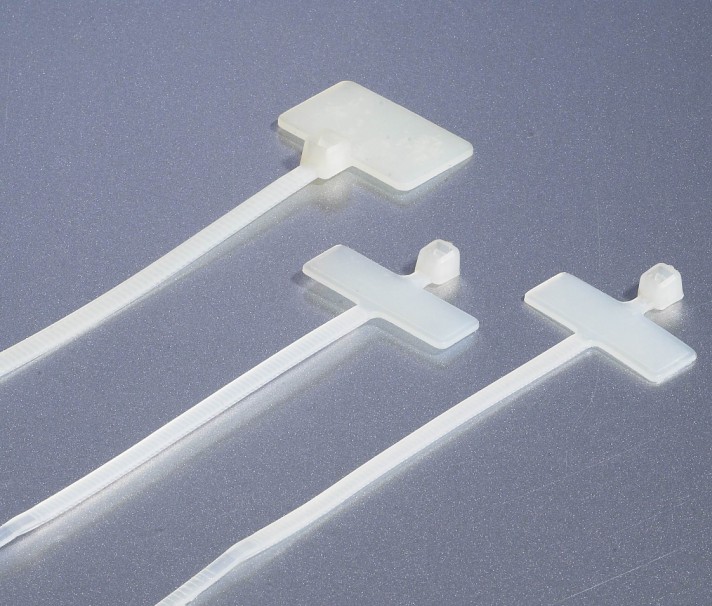
Cable tie with marker
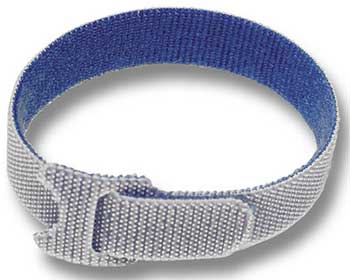
A Velcro Cable Tie
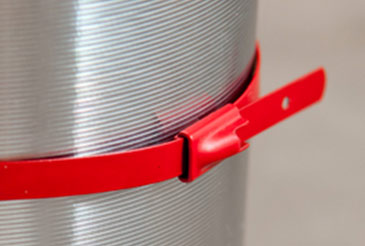
A Steel Cable Tie
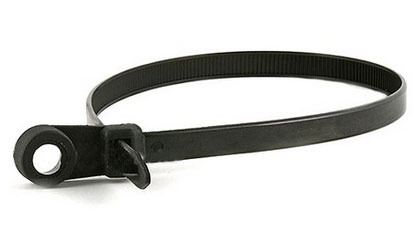
An Eyelet Cable Tie
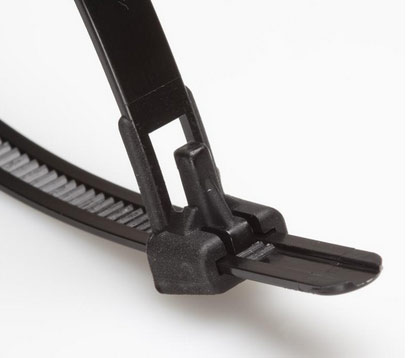
A Releasable Cable Tie
Using a Cable Tie Gun
If you are using a lot of cable ties you might consider getting a cable tie gun. This tightens the cable tie and then cuts off the excess as close to the joint as possible.
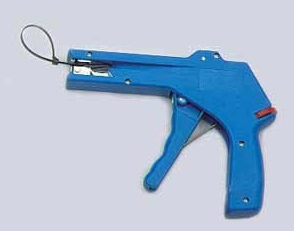
This gun is a cable tie tensioning tool, is made of metal and, quite simply, will save you hours!
Amazing uses for Cable Ties
A normal, nylon cable tie is usually used for tying bundles of cables together (hence the name) but can also be used for securing cables to poles or other equipment as well as tying wires and cables to the frames of bicycles or unruly plants to garden fences.
Here are some of our favourite uses that we have come across:
- Tying cable – this has to be number one! It’s what they were made for after all
- Child-Proofing – keep little hands out of cupboards with precious objects or breakables. The releasable ones are really god for this job
- Training your Plants – make sure your roses or tomatoes don’t fall over by using cable ties to train them
- Making ‘Snow Tyres’ for a Bike – use them around you bike tyres and wheels to create extra grip in case you have to use your bike in the snow and ice
- Sink Unclogger – Use a long and flexible cable tie to poke down the plug hole to unblock it without having to resort to nasty chemicals
- Make an Organiser – using left over boxes and cartons fastened together with cable ties you can make a handy workshop organiser for screws, nails and other little bits
- Securing Zips – Ensure that you baggage isn’t tampered with by cable tying the zips when you’re travelling
- Identifying Keys – Add coloured cable ties to your key rings so that you can quickly identify the right bunch
- Securing Objects for Transit – when you are travelling or shipping a number of loose items, it is often easier to cable tie them together so that they don’t get damaged
Securing Cables and Cable Ties to Walls
There are a number of solution for fixing cables to walls or other surfaces when using cable ties. Here are some of the most common:
- Cable Tie Back Plate: When using cable ties with large amounts of cables a back plate is often used. The cable tie back plate is useful for fixing multiple ties to one solid frame. The frame, or back plate is fixed to a surface, such as a wall or the side of a cabinet, and the ties are simple slotted in and connected. This keeps all wiring jobs very neat and tidy and makes alterations to the system very easy indeed
- Cable Tie Cradles: Sometimes in is not possible to use a cable tie back plate or this is overkill, but you still need to secure the cables to a wall or other surface. In this case we recommend the use of cable tie cradles. For individual strips or cable runs, a cable tie cradle can be used
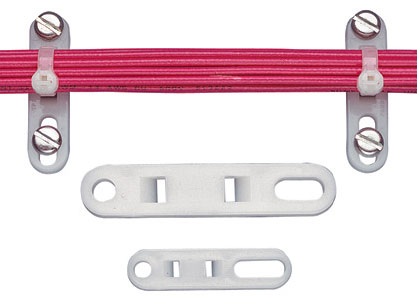
A cable tie back plate
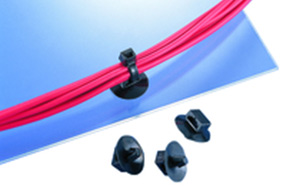
A cable tie cradle in use

 (86)577-62510236
(86)577-62510236 zhejin388@foxmail.com
zhejin388@foxmail.com

 浙公网安备 33038202003922号
浙公网安备 33038202003922号